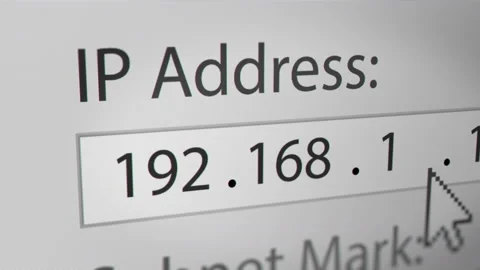Understanding IP Addresses
 Manjot Singh Bajwa
Manjot Singh Bajwa
What is an IP Address?
An IP address is a unique identifier assigned to each device connected to a network. It serves as the address that allows devices to find and communicate with each other over the internet or within a local network.
IPv4 Addresses
IPv4 (Internet Protocol version 4) addresses consist of 4 bytes, with each byte containing 8 bits, making a total of 32 bits. Each byte is represented as a decimal number, separated by periods. The binary representation of each byte is determined by the powers of 2:
2^7 (128), 2^6 (64), 2^5 (32), 2^4 (16), 2^3 (8), 2^2 (4), 2^1 (2), 2^0 (1)
Example of an IPv4 Address:
Decimal format:
172.32.16.1Binary format:
10101100.00100000.00010000.00000001
What is Subnetting?
Subnetting, or subnetworking, is the process of dividing a larger network into smaller, more manageable sub-networks, called subnets. Subnetting improves network performance and enhances security, privacy, and isolation for devices within the network.
Types of Subnets:
Private Subnets: Do not have direct internet access and are typically used for internal network communications.
Public Subnets: Have direct internet access and can communicate with external networks.
CIDR (Classless Inter-Domain Routing)
CIDR is a method for allocating IP addresses and IP routing. It allows for a more flexible allocation of IP addresses compared to the older system of fixed classes (A, B, and C), which often led to wasted addresses.
IP Address and Slash Notation:
An IP address using CIDR looks like this: 192.168.1.0/24. The /24 is called the "prefix" and indicates how many bits of the IP address are used for the network part. In this case, 24 bits are used for the network.
Benefits of CIDR:
Efficient Use of IP Addresses: Allows for creating groups of any size, avoiding wastage.
Smaller Routing Tables: Combining multiple addresses into one group reduces the number of routes that need to be managed, making the internet more efficient.
Example of CIDR in Action:
For an IP address 192.168.1.0/24:
The
/24prefix means the first 24 bits are for the network, and the remaining 8 bits are for hosts.IP range:
192.168.1.1to192.168.1.254Network address:
192.168.1.0Broadcast address:
192.168.1.255
Common Private Subnets:
192.168.x.x172.16.x.xto172.31.x.x10.x.x.x
Understanding Ports
A port is a virtual point on a device where network connections start and end. It helps direct data to the correct application.
Example: Web Browsing
When you visit a website, your computer connects to the web server's IP address on port 80 (for HTTP) or port 443 (for HTTPS). Think of the IP address as the building address and the port number as the specific room you want to go to in that building.
IP Address + Port:
Together, they identify the device and the specific service you want to use. Port numbers range from 0 to 65535.
Common Ports:
HTTP (websites): Port 80
HTTPS (secure websites): Port 443
FTP (file transfer): Port 21
By understanding these fundamental concepts, you can gain a clearer insight into how networks operate, how data is routed, and how devices communicate with each other efficiently and securely.
Subscribe to my newsletter
Read articles from Manjot Singh Bajwa directly inside your inbox. Subscribe to the newsletter, and don't miss out.
Written by

Manjot Singh Bajwa
Manjot Singh Bajwa
I'm experienced in designing scalable software architecture on a higher level and lower level implementation. Ensures the smooth functioning of technical operations by monitoring and evaluating staff progress. Involved in the training and recruitment process, works for company goals, and ensures overall client satisfaction.